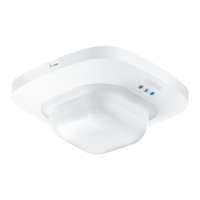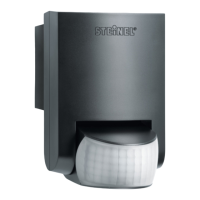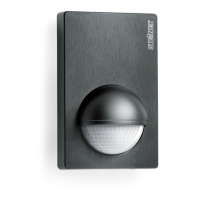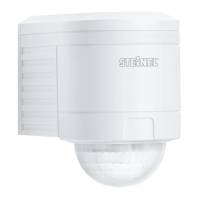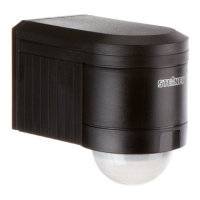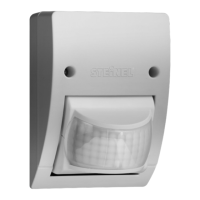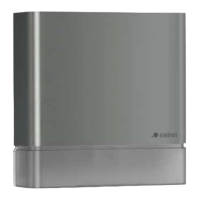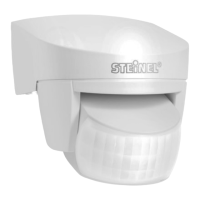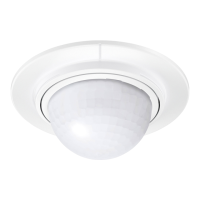- 25 -
Functions – Settings by potentiometer
Examples of use Brightness settings
Night-time modemin
Corridors, foyers 1
Stairs, escalators, moving walkways 2
Washrooms, toilets, switchrooms, canteens 3
Sales oor, kindergartens, nursery school rooms,
sports halls
4
Work env
ironments: O ces, conference and meet-
ing rooms, precision assembly activities, kitchens
5
Working areas requiring good light:
Laboratory, technical drawing, precision work
>=6
Daylight mod
e max
Stay-'ON'- time for
switching output 1
Setting 30 sec. – 30 min.
The chosen stay-'ON' time is infi-
nitely variable from a minimum
of approx. 30 sec. to a maximum
of 30 mi
n. Light is calibrated after
3 min. When the threshold is
exceeded, the sensor switches
'OFF' after the stay-'ON' time
expires.
Time setting
If the dial is set to (fully anti-
clockwise), the unit is in pulse
mode, i.e. the output is switched
'ON' for approx. 2 sec. (e.g. for stair-
well lighting timer). Afterwards,
the s
ensor does not respond to
movement for approx. 8 sec.
Day mode is the only mode
possible here because of dazzle by
light from external sources.
Turned fully clockwise:
The stay-
'ON' time is self-learning and
adjusts dynamically to user
behaviour. The optimum time
cycle is determined by means of
a learning algorithm.
The shortest time is 2 min.,
the longest 20 min.
Pulse mode (except DIM)
IQ mode
The chosen response threshold
can be infinitely varied from
approx. 10 – 1000 lux.
Control dial turned fully clockwise:
MAX daylight mode
Control dial turned fully anti-clock-
wise: MIN ni
ght-time operation
Depending on the site of installa-
tion, the setting may need to be
corrected by 1-2 marks on the
scale.
Twilight setting
Potentiometer
Potentiometer
COM 1 + COM 2
Note: Depending on the site of installation, the setting may need to be corrected by 1 – 2 marks on the scale.
Brightness is measured directly at the sensor.
GB

